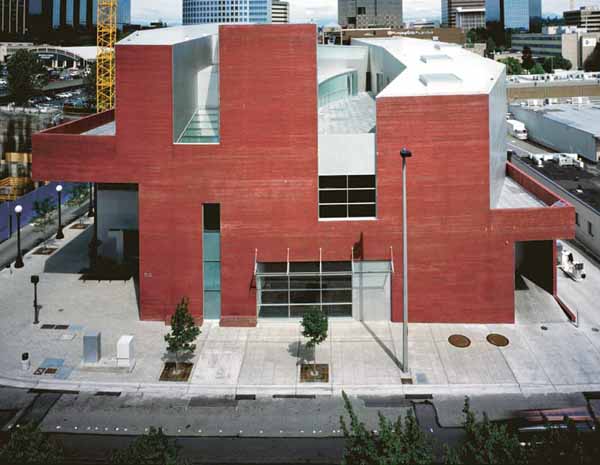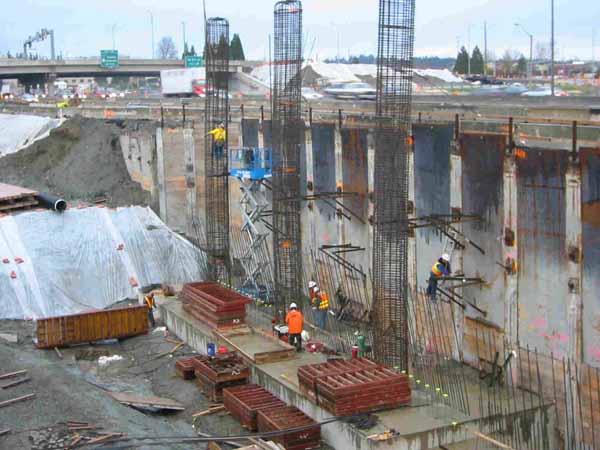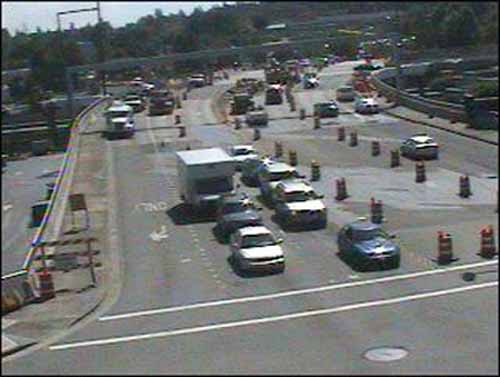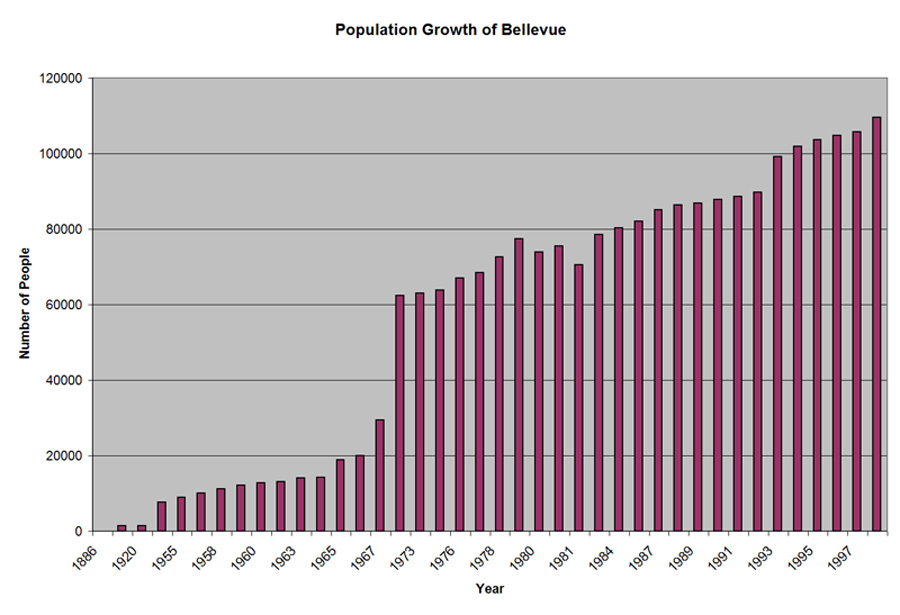|
 |
Bellevue
’s first city council met in 1953. From the very beginning the city leaders embraced a policy of “active but intelligent growth.” In fact, before
Bellevue
was incorporated as a city developers had grand ideas for the community. For example, James Ditty, who is often thought of as
Bellevue
’s first developer drew up plans of what he thought
Bellevue
would look like in the future. It included skyscrapers, hotels and several bridges to cross
Lake Washington
. He planned some streets to have as many as six lanes, anticipating that some day
Bellevue
would be home to more than 200,000 people.
The 1950’s and 60’s provided a perfect atmosphere for growth. Post war
America
placed emphasis on homeownership creating mass produced homes and suburbs.
Bellevue
was no exception. It acted as the perfect suburb to the
Seattle
area. People could work in the city and own homes in
Bellevue
, maintaining the rural life style. Real estate investors bought up acres of land surrounding the downtown area in order to build planned communities modeled after
Levittown
,
New York
. These communities were planned to have their own infrastructure, shopping centers and parks. With the addition of the second Lake Washington Bridge in 1963 the commute to and from
Seattle
was made very convenient. Today
Bellevue
attracts new residents because it is known for its good schools, abundance of parks and housing opportunities with a short commute to work.
|
|
|
|
There has always been a plan for
Bellevue
but there has also always been tension over what kind of city
Bellevue
should be. In 1974 the city debated a new comprehensive plan that would its evolution from semi-rural to suburban. A scheme was devised to step down densities fro the downtown core to its fringes. This was guided by the Downtown Development Board (BDDB, later Bellevue Downtown Association). The BDDB and the city worked together to develop a new comprehensive plan to preserve the character of
Bellevue
’s neighborhoods. There mission was to “plan and promote development to achieve a quality environment for people living and working in
Bellevue
. Early on the City Council had a firm grasp on many issues involved in running a city.
Bellevue
had to face the challenges of schools, traffic, water supplies, sewage systems, police protection, zoning, urban planning and park development.
|
|
|
|
 |
|
With the unprecedented growth that
Bellevue
has experienced in the past few decades also comes challenges that the city must overcome.
Bellevue
is a major trading center which is well linked to established transportation corridors. Two busy interstate highways converge at
Bellevue
: I-90 links the city to the east-west interstate system and I-405 connects
Bellevue
with the north-south interstate system. While it seems that this would make downtown
Bellevue
easily accessible, this is not that case. Both floating bridges are often stopped bumper to bumper. Even though
Bellevue
is just across the water from
Seattle
, at times this short trip can take forever!
In an effort to address this problem city planners have created a program called “Access Downtown.” Access Downtown is an alliance between Sound Transit, the City of
Bellevue
, Washington State Department of Transportation, King county Metro and the Federal Highway Administration. Over the next three to four years, Access Downtown will complete local street improvements in and around downtown
Bellevue
. There will also be specific freeway enhancements at key interchanges.
|
|
|






